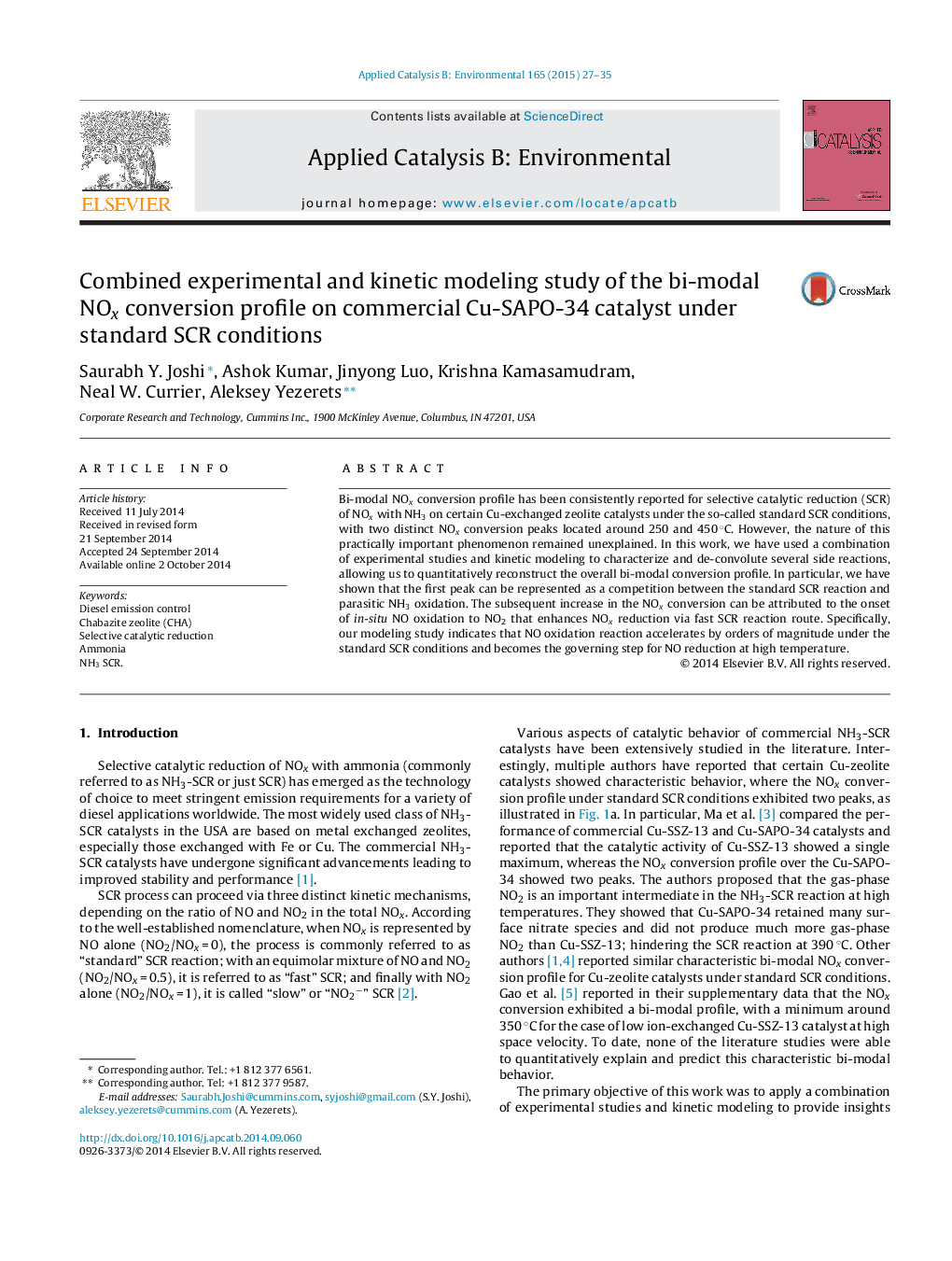| Article ID | Journal | Published Year | Pages | File Type |
|---|---|---|---|---|
| 45530 | Applied Catalysis B: Environmental | 2015 | 9 Pages |
•We model bi-modal NOx reduction profile for Cu-SAPO-34 under standard SCR conditions.•The redox activity of the catalyst significantly enhances under SCR conditions.•The rate of NO oxidation increases by orders of magnitude under SCR conditions.•We develop a method to determine washcoat diffusivity of NH3 in Cu-zeolite catalyst.
Bi-modal NOx conversion profile has been consistently reported for selective catalytic reduction (SCR) of NOx with NH3 on certain Cu-exchanged zeolite catalysts under the so-called standard SCR conditions, with two distinct NOx conversion peaks located around 250 and 450 °C. However, the nature of this practically important phenomenon remained unexplained. In this work, we have used a combination of experimental studies and kinetic modeling to characterize and de-convolute several side reactions, allowing us to quantitatively reconstruct the overall bi-modal conversion profile. In particular, we have shown that the first peak can be represented as a competition between the standard SCR reaction and parasitic NH3 oxidation. The subsequent increase in the NOx conversion can be attributed to the onset of in-situ NO oxidation to NO2 that enhances NOx reduction via fast SCR reaction route. Specifically, our modeling study indicates that NO oxidation reaction accelerates by orders of magnitude under the standard SCR conditions and becomes the governing step for NO reduction at high temperature.
Graphical abstractFigure optionsDownload full-size imageDownload as PowerPoint slide
